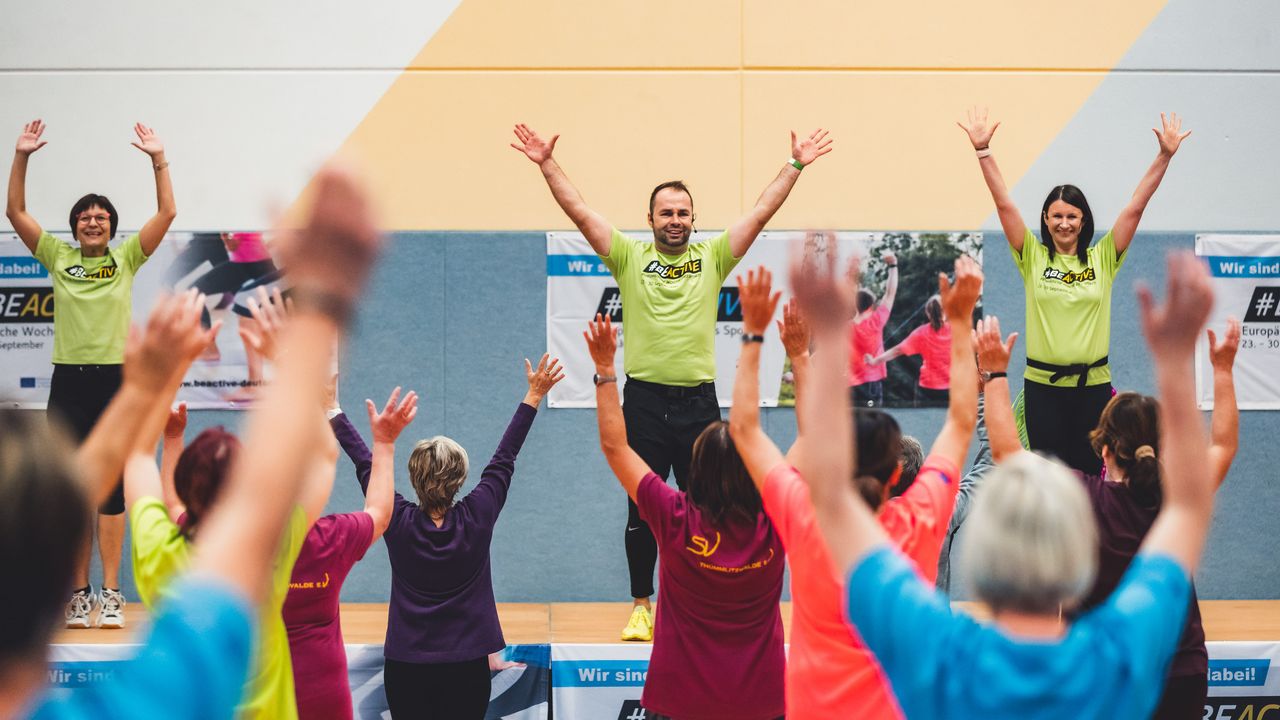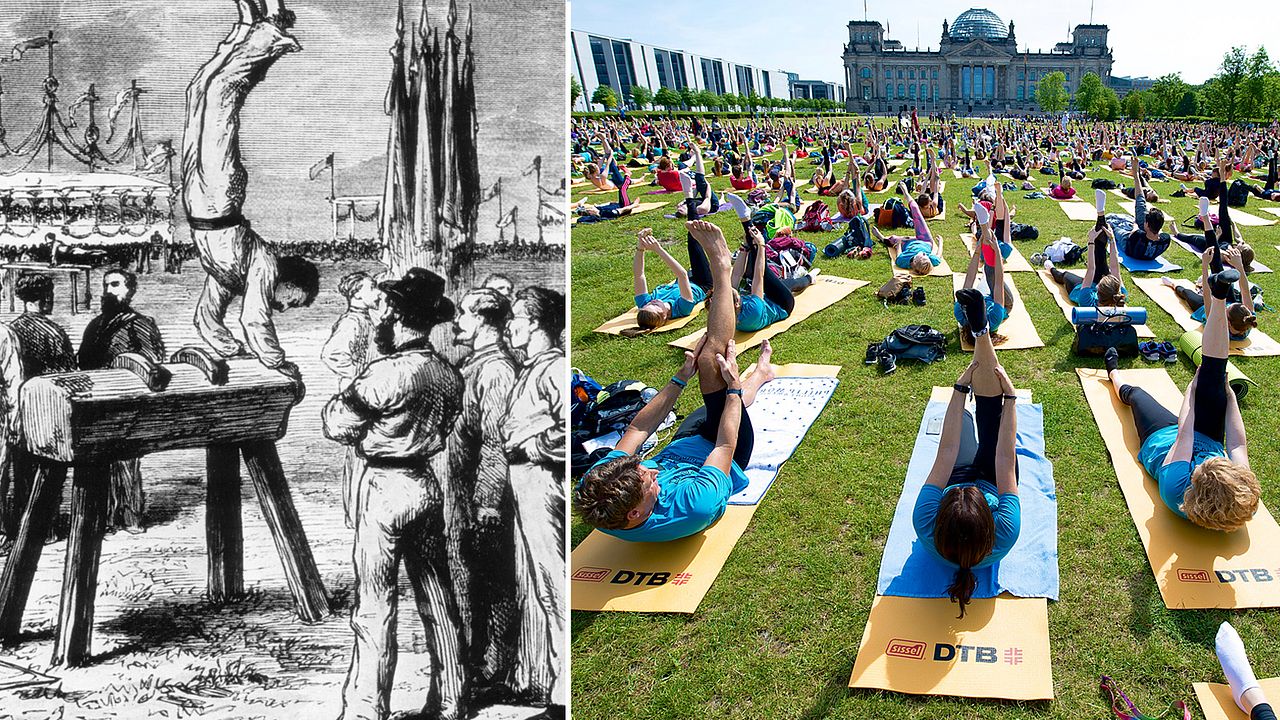German Gymnastics Federation looks back at its “enormous development” over 175 years
27/03/2023

2023 marks a special year in the life of one of our founding members, Deutscher Turner-Bund (DTB; German Gymnastics Federation), as it is its 175th anniversary. On 3 April 1848, on the initiative of August Schärttner, leader of the republican Hanau gymnasts, DTB was founded in the Dutch Walloon Church in Hanau. DTB is currently the second-largest umbrella organisation in Germany, with 4.6 million members participating in roughly 18,600 gymnastics clubs and departments. With its 22 sports, the federation offers a variety of performance-, competitive and mass sport events, as well as leisure and health-enhancing physical activities.
Since 1848, the German gymnastics movement has continuously re-created itself in response to the ever-changing circumstances, and as a result, it can look back on an adventurous history. The federation has had significant success on a national and international level over the years. The organisation of top international sporting events in Germany, numerous Olympic, World, and European Championship titles, campaigns for children's gymnastics, as well as for adults, promotion of physical activity to seniors, and the organisation of 43 German Gymnastics Festivals are just a few examples.
So, the federation’s anniversary is not only a cause for celebration, but also a chance to reflect on the past and highlight noteworthy events, as well as the contributions made by the gymnastics movement to society's advancement.
"The German Gymnastics Federation has undergone an enormous development over the course of its 175-year history. Its change from a pure gymnastics federation to a modern multi-discipline federation with sports offers for babies to older people makes us proud and means an enormous social significance and responsibility at the same time. Today, the DTB has a formative influence on the physical and mental health of society in Germany. Its almost 20,000 clubs offer not only sport and exercise, but also cohesion and togetherness. This is something unique that we absolutely have to protect and prepare for the future," DTB President Dr Alfons Hölzl explains.
Let’s take a look at where and how it all started!
After the Prussian King Friedrich Wilhelm IV lifted the "gymnastics ban" that had been in place since 1819/20 on 6 June 1842, a number of regional associations were formed in Germany in addition to many gymnastics clubs. However, the gymnasts did not think about a national gymnastics federation until 1846/47.
At the beginning of the German Revolution of 1848/49, when citizens of the 39 constituent states demanded social and political rights from their governments, but also the unity of Germany, August Schärttner invited all gymnasts to a gymnastics meeting in Hanau in March 1848. Under the chairmanship of Theodor Georgii from Esslingen and in the presence of Friedrich Ludwig Jahn, the German Gymnastics Federation (DTB) was founded on 3 April. Paragraph 2 of the resolutions states that the purpose of the federation is "to fight for the unity of the German people, to raise the sense of brotherhood and the people's physical and spiritual strength.".
On 18 May 1848, just a few days after DTB was established, Frankfurt's St. Paul’s Church hosted the first democratically elected parliament, the National Assembly. Many gymnastics clubs played a significant role in the 1848 Revolution as well as the fight for civil liberties and human rights. As an elected delegate, "Turnvater" (“gymnastics father”) Friedrich Ludwig Jahn participated in the National Assembly. As the deputies entered the National Assembly in St. Paul's Church, gymnasts in their characteristic gymnastics attire stood guard.
However, gymnasts were divided over the political objectives - republic or monarchy - which were also passionately debated by the National Assembly in St. Paul's Church in Frankfurt. Later that year, the republicans split off and founded a second national federation, the Democratic Gymnastics Federation. With the failure of the bourgeois revolution and the flight of many republican-minded gymnasts abroad, the Democratic Gymnastics Federation disappeared. An attempt to unite the two federations with the founding of the Allgemeiner Deutscher Turnerbund was unsuccessful; for during the 2nd Gymnastics Congress held in Eisenach in 1850, the representatives of the DTB again decided to keep their statutes and the federation free of politics.
The original DTB foundation likewise lost significance with the suppression of the revolution. The German Gymnastics Federation was established in Weimar in 1868, but after its voluntary dissolution in 1936, the National Socialist sports system was set up. After decades of turbulence due the First and Second World Wars, DTB was re-established on 2 September 1950, in Tübingen, with the committed participation of Walter Kolb, the Lord Mayor of Frankfurt and who was elected as the First Federal President of DTB.
When today's DTB was founded, those responsible referred to the democratic ideals of the 1848/49 revolution. Therefore, on 10 December 1995, the Presidium dated the beginning of the organised gymnastics movement and the foundation of an umbrella organisation to the year 1848.
The gymnast's salute and the four Fs
There is no escaping them in gymnastics: The four Fs. Now used as a symbol by many gymnastics clubs and associations, the 4 F’s stand for “frisch, fromm, fröhlich, frei”, meaning "fresh, pious, cheerful, free".

What’s next?
To commemorate its foundation 175 years ago, DTB is planning a ceremony in the Paulskirche in Frankfurt on 2 April at 11:00-13:00. The federation will also return to its founding place, Hanau, for German Gymnastics Day in November 2023, where a symposium on the history of gymnastics will also draw attention to the significance of the gymnastics movement.
For more information on the German Gymnastics Federation, follow the link below:
https://www.dtb.de
photo credit: Colditzer TV/Torsten Arnast; taken at the #BeActive Night in the Colditzer Turnverein
Posted on 27/03/2023 by Anita Kiraly, Communications Officer, ISCA

